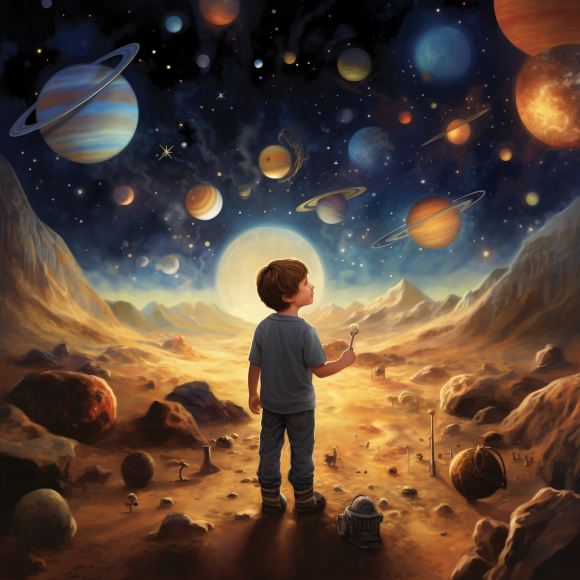As we embark on a cosmic adventure through our solar system, we’ll delve into the captivating realms of each planet, unlocking their secrets and mysteries. Imagine our solar system as a celestial gallery, each planet a unique masterpiece waiting to be explored. With a telescope of words, let’s peer into the enchanting landscapes and fascinating characteristics of these cosmic wonders.
Mercury: “The Swift Messenger”
Mercury, the closest planet to the Sun, lives up to its name as the “Swift Messenger.” With a surface resembling a lunar landscape, it races around the Sun in a mere 88 days, making it the speedster of the solar system. Did you know? Despite its proximity to the Sun, some of its craters remain frigid enough to harbor ice.
Venus: “The Shrouded Beauty”
Venus, often dubbed the “Evening Star” or “Morning Star,” captivates us with its radiant appearance. Covered in thick clouds that create a runaway greenhouse effect, it’s the hottest planet in our solar system. Its beauty hides the extreme temperatures that lie beneath its veiled atmosphere.
Mars: “The Red Planet’s Mysteries”
Mars, with its rusty hue, has ignited human curiosity for centuries. It boasts the tallest volcano and the deepest canyon in the solar system. In recent years, rovers like Curiosity have wandered its surface, searching for signs of past or present life—a quest that keeps scientists and dreamers alike gazing at the skies.
Jupiter: “The King of Giants”
Jupiter, the largest planet, is a cosmic giant with swirling bands of clouds. Its Great Red Spot, a colossal storm, has raged for centuries. Imagine a king’s robe with vivid colors and a storm as grand as a kingdom. Jupiter’s many moons include Ganymede, the largest moon in the solar system, offering icy landscapes that hint at hidden oceans.
Saturn: “The Ringed Jewel”
Saturn’s magnificent rings have earned it the nickname “The Ringed Jewel.” Picture these rings as a cosmic accessory, glittering in the sun’s embrace. Among its numerous moons, Titan stands out as an enigmatic world with lakes of liquid methane—a true frontier of extraterrestrial exploration.
Uranus: “The Sideways Planet”
Uranus, the quirky planet, spins on its side as if it’s rolling along its orbital path. Imagine a planet doing cartwheels in space! This blue-green giant also boasts a collection of rings, each with its own story waiting to be told.
Neptune: “The Mysterious Blue”
Neptune, the furthest planet from the Sun, is a world of icy blues and winds that roar louder than a jet engine. Its moon Triton, with its icy volcanoes and retrograde orbit, challenges our understanding of moon formation.
Pluto: “The Tiny Rebel”
Though reclassified as a “dwarf planet,” Pluto remains a rebel in our hearts. Its icy heart and complex terrain have been imaged by the New Horizons spacecraft, revealing a world of surprises beyond our imagination.
Conclusion:
As we bid adieu to this cosmic tour, we’ve unveiled the extraordinary diversity of our solar system’s planets. From Mercury’s speedy orbits to Pluto’s rebellious nature, each planet tells a story of cosmic evolution. Just as astronomers and dreamers before us have looked up at the night sky, we now continue the tradition, gazing beyond the horizon of our own world and reaching for the stars.


